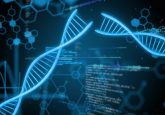Robert MacNeill: the distinct bioanalytical paradigms for solutions and for extracts

In this installment of Robert MacNeill’s (Covance) column, Robert discusses the potential disparity in results when using a given method for extracted analytical batches versus in solution, the different challenges involved with solutions and extracts and the necessity to fully consider the relevant chemistry from the earliest stages of method development.
Robert MacNeill received his Bachelor’s degree with Honors in Chemistry from Heriot Watt University then his MSc in Analytical Chemistry from the University of Huddersfield, both in the United Kingdom. Robert is also a Chartered Chemist and a Fellow of the Royal Society of Chemistry. With 22 years of experience in all aspects of quantitative bioanalytical LC–MS/MS method development, 13 of these years heading method development activities within the Princeton site that has housed HLS/Envigo (now Covance), and a regular author and peer reviewer for the journal Bioanalysis, Robert is a recognized expert and innovator in the field.
One of my favorite catchphrases is that the ideal extract should behave as if it were a simple solution. In other words, an ideal extraction selectively and efficiently removes all biological matrix components from a sample whilst effecting 100% recovery of all analytes and internal standards. The removal of the matrix components, many of which constitute interference and a good complement will palpably foul instrumentation, liaises directly into the essence of the commonly used term, ‘extract cleanliness’.
Reality has it, though, that no method could ever fully aspire to this ideal, and although this could easily lead to a different story from what I now would like to tell, it is this intrinsic difference, which leads to the situation discussed in this particular editorial. In this context of solution versus extract in bioanalytical LC–MS, we are essentially dealing with two different paradigms and we are required to have a keen awareness of certain methodological aspects in order to be consistently successful in both scenarios. To clarify by example, I am sure that many a bioanalytical scientist has found themselves wondering why, for a given method, extracted analytical batches work wonderfully, yet simple tests in solution can give bizarrely unacceptable data.
There are challenges associated with both, but they are not entirely the same. The dangers typically present in solution tests, where such solutions might be injected into the LC–MS to assess correlation of two or more primary solutions, or to check spiking solutions, backed up by precision measurements in replicate sets, are to observe losses from non-specific binding (NSB), also referred to as non-specific adsorption, and solubilization difficulties similarly causing losses and imprecision. The risk of NSB essentially arises from the fact that there is nothing else in the solution that could mitigate the phenomenon taking place on the surfaces, like the residual matrix components do in an extract. Also, interestingly, a solubility issue in a primary solution may not be immediately obvious as dilutions may well be perfectly solubilized and show good precision and the only answer is to take multiple aliquots of the primary solution for analysis if strange data are observed. Additionally, more dilute solutions are more prone to suffering significant losses at the hands of NSB. Then, on the other hand, the main dangers typically present in extracts are presented by the residual matrix components themselves, in terms of signal alteration and associated imprecision and non-reproducibility. This is, of course, something abundantly discussed in the global bioanalytical LC–MS community over the last 2 decades.
This article is part of Robert MacNeill’s (Covance) quarterly column for Bioanalysis Zone which focuses on quantitative method design. You can read past instalments of the column here.
Therefore, the presence of matrix components can be viewed as beneficial and it can be viewed as detrimental. The absence of matrix components can be viewed in exactly the same way. For any given method, or analyte, the solution lies in getting the chemistry appropriate and functional in both paradigms, and this intuitively involves the ideal scenario of having extracts as compositionally close to solutions as possible.
In method development we firstly look, as basic chemistry-based requirements, for complete solubilization and the absence of any risks associated with NSB and instability. This is naturally performed initially in solution, before progression later in development to candidate extractions. It should be an easy progression and these conditions will translate to extraction-related solution compositions and choices of vessel material composition, i.e. organic and aqueous composition, pH, ionic strength; polypropylene, polar-modified or glass vials, tubes and collection plates. As alluded to already, it is critical to make predictions early, based primarily on the chemistry involved. Anticipating how the compounds are going to behave in terms of charging and solubility, for instance. Then how this ties in with the choice of container in order to negate NSB, including the sample preparative and analytical endpoints. One more specific consideration is to do with solution storage at very low temperatures, where the thermal excursions can wreak havoc with regard to binding and solubility.
A trap that is easily fallen into is to use universal-style defaults, avoiding the perspective of the particular nature and requirements of each given method. Defaults such as, for instance, always using polypropylene tubes for solution preparation and storage, whatever the method. This can result in unexpected delays and frustration until the underlying reason is addressed and the necessary changes are introduced. Many aspects like this may seem innocuous but are actually potent. This underlines the importance of having the method description appropriately detailed.
We hope the various established solution and container choices are rugged enough to never result in any analytical oddities within both solution and extract tests. However, there are plenty of real situations where it happens, but we can rectify this, as illustrated.
In summary, careful consideration of the pertinent chemistry is pivotal in a method development. In the earliest stages, anticipation must be made as to the most appropriate solvent compositions and types of vessel to use and – as with so many aspects of method development – the molecular structure and key functionalities drive this decision making. The ideal endpoint has an extraction clean enough to ultimately mimic neat solution and conditions are such that free solubility is manifest, liaised with no binding propensity. Only then can we be truly satisfied with the intrinsic ruggedness and reproducibility of the method, a priceless element of daily function in the regulated laboratory.
Our expert opinion collection provides you with in-depth articles written by authors from across the field of bioanalysis. Our expert opinions are perfect for those wanting a comprehensive, written review of a topic or looking for perspective pieces from our regular contributors.
See an article that catches your eye? Read any of our Expert Opinions for free.





